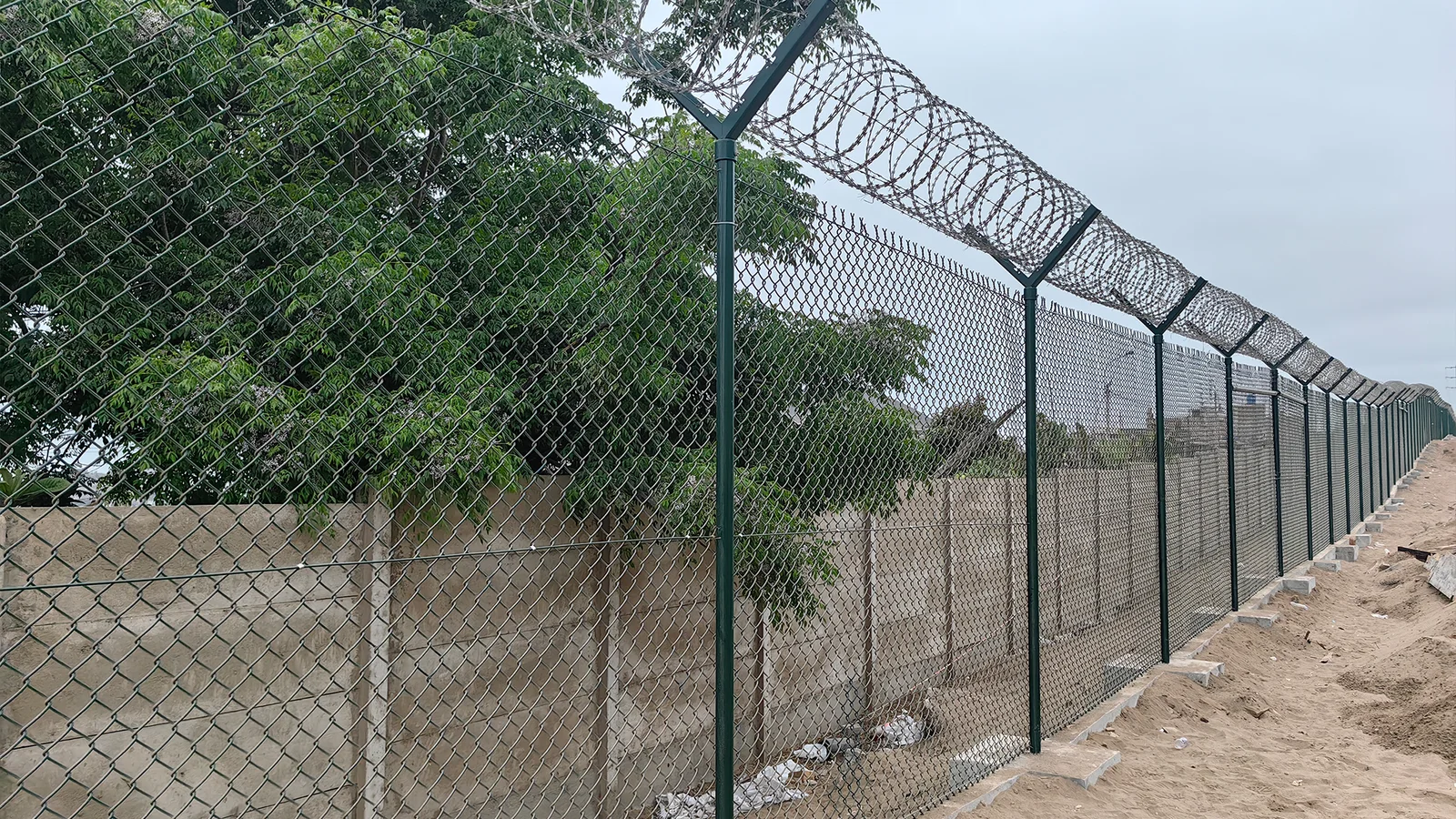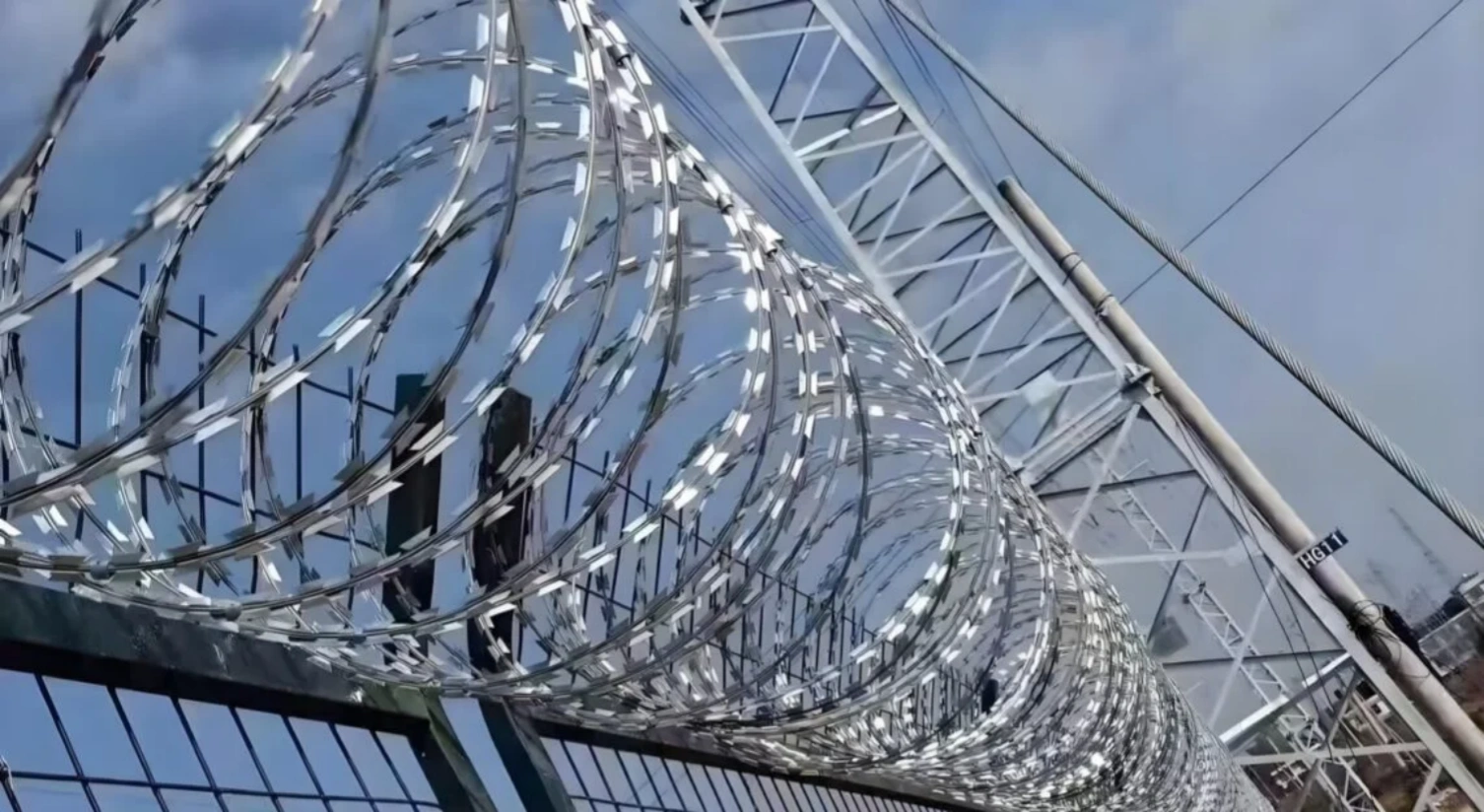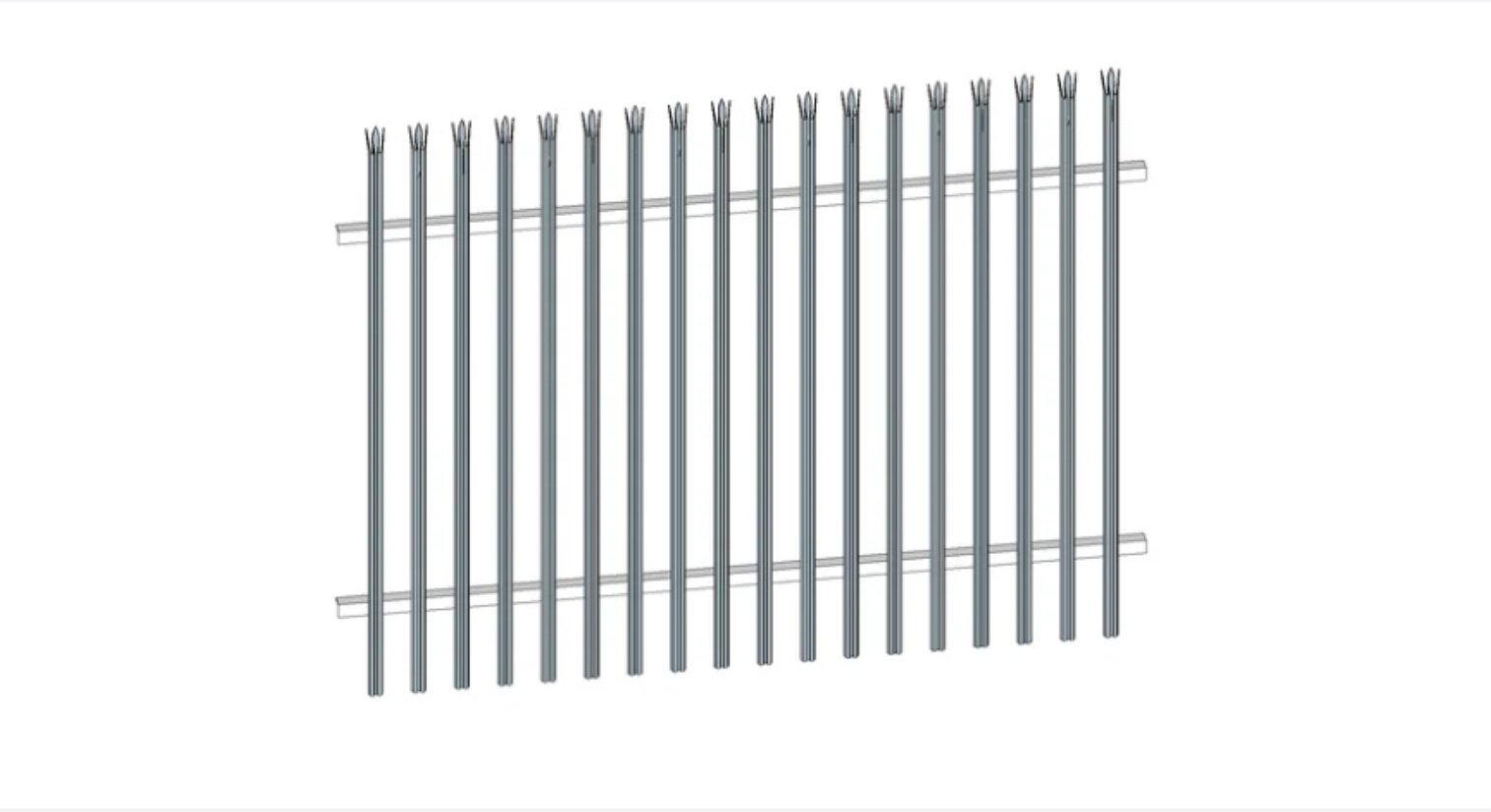Table of Contents
ToggleIntroduction to Chain Link fence Applications
Chain link fence applications represent a versatile solution utilized across various sectors, offering a combination of functionality and aesthetic appeal. Predominantly recognized for its role in fencing, chain link serves multiple purposes, ranging from residential to commercial and industrial usages. The material, typically made from galvanized steel, presents a durable and resilient option that meets the needs of different environments, ensuring long-lasting protection and reliability.
One of the primary advantages of chain link fencing is its robust protective performance. The design allows for visibility without sacrificing security, making it an ideal choice for properties that require both monitoring and protection. This balance between security and translucent design renders chain link applications particularly favored in public areas, schools, and sports facilities, where safety remains paramount but unobstructed views are also necessary.
Durability is another significant benefit of chain link applications. The galvanized steel used in fabrication is resistant to corrosion, rust, and wear, allowing it to endure various weather conditions without deteriorating. This inherent strength minimizes the frequency of repairs or replacements, providing a cost-effective fencing solution for property owners. Furthermore, advancements in coating technologies have expanded the aesthetic appeal, with colored and vinyl-coated options available, complementing the visual aspects of any landscape.
Ease of installation further enhances the attractiveness of chain link applications. Compared to alternative fencing materials, chain link can be assembled and erected quickly, often requiring less labor and time. This efficiency not only reduces costs but also enables property owners to enhance their perimeter security swiftly and effectively. Overall, chain link applications serve as an essential component across various fields, offering unique benefits that make them a preferred choice for many.
Good Protective Performance: Strong Impact Resistance
Chain link fencing is widely recognized for its robust protective performance, particularly in environments that demand high durability and flexibility. This type of fencing is characterized by its unique checkered structure, which enhances its ability to absorb and disperse impact forces. Such features make chain link applications an excellent choice for areas requiring heightened security and protection against unauthorized access or accidental breaches.
The flexible nature of chain link fencing allows it to withstand significant impacts without compromising its integrity. This elasticity is crucial in situations where potential hazards present themselves, such as in stadiums, roadways, and railway embankments. For instance, at sporting events, chain link fences can effectively protect both spectators and players by establishing a secure perimeter. Similarly, on roadways, they serve to prevent stray vehicles or pedestrians from entering restricted zones, thereby minimizing the risk of accidents.
Moreover, in railway embankments, the use of chain link fencing creates a barrier that deters trespassing, enhancing passenger safety and the operational efficiency of rail systems. The impact resistance of chain link applications also plays a vital role in minimizing maintenance costs, as the fencing can endure environmental stressors and accidental impacts that would otherwise compromise other forms of barriers.
In conclusion, the protective capabilities offered by chain link applications through their strong impact resistance and flexible design make them an invaluable asset in various settings. Whether used to safeguard lively sports arenas, busy thoroughfares, or crucial transport infrastructures, chain link fencing effectively fulfills the need for reliable and durable protective barriers.
Prevention of Object Penetration
Chain link fences are renowned for their effectiveness in preventing the penetration of both small and large objects. The design of chain link fencing features a uniform mesh size, which is pivotal in blocking various forms of debris, including stones, vegetation, and other potentially harmful materials. This characteristic makes chain link fences an essential component for enclosures, particularly in settings where the protection of property and livestock is a priority.
In agricultural contexts, chain link fences serve a critical role in livestock enclosures. By utilizing chain link fencing, farmers can effectively safeguard their animals from external threats, including wild animal intrusions. The robust construction of these fences ensures that not only can animals such as cattle, sheep, and goats be kept secure, but also prevents predators from accessing the livestock. For instance, a properly installed chain link fence can deter animals like coyotes and foxes, which could pose a significant threat to farm animals.
Moreover, the height of chain link fencing can be customized to suit specific requirements, providing an additional layer of security against larger animals. It is essential to maintain the integrity of these fences to ensure maximum effectiveness in deterring intrusions. Regular inspections and maintenance can help identify any potential vulnerabilities or damage that may allow for object penetration. This proactive approach is crucial in preserving the safety and security of both the enclosed livestock and the property itself.
In summary, chain link fences play a vital role in preventing object penetration through their robust, uniform mesh design. Their application extends beyond mere property demarcation to serve as indispensable enclosures for livestock, ensuring the safety of animals and the integrity of agricultural operations.
Corrosion Resistance and Long Service Life
Chain link fences are renowned for their durability, a characteristic that can largely be attributed to the high-quality materials employed in their construction. Typically, these fences are made from metal wires that are engineered to withstand various environmental conditions. The most commonly utilized materials include stainless steel and galvanized steel, both of which offer exceptional corrosion resistance. Galvanized steel, for instance, is coated with a layer of zinc, providing a protective barrier against moisture and corrosive elements common in outdoor settings. This intrinsic quality ensures that the structural integrity of the fence remains intact over time, minimizing the need for frequent replacements.
Stainless steel also plays a significant role in the durability of chain link fences. Known for its superior resistance to oxidation and rust, stainless steel chains maintain their aesthetic appeal and strength even when exposed to harsh weather conditions. The use of stainless steel is particularly advantageous in coastal areas where saltwater can accelerate the corrosion process in lesser materials. As such, properties of these metals contribute to the long service life of chain link fencing, making it a cost-effective investment over time.
Additionally, surface treatment processes further enhance the corrosion-resistant attributes of chain link fences. Treatments such as powder coating and vinyl coating provide additional layers of protection, which not only safeguard the metal from corrosion but can also offer aesthetic benefits. These coatings can come in a variety of colors, allowing for customization to fit specific visual preferences. Overall, the combination of high-quality materials and advanced surface treatment processes ensures that chain link fences are not only robust and long-lasting but also resistant to the elements, making them a practical choice for various applications.
Aesthetically Pleasing and Practical Design
Chain link applications are often perceived primarily through a functional lens; however, they also possess substantial aesthetic appeal that can complement various environments. The design of chain link fencing features a smooth weave and uniform mesh that not only serves practical purposes such as security and visibility but also contributes to an organized and tidy look. This structural integrity, combined with visually appealing lines, allows chain link to blend seamlessly into numerous settings.
Moreover, the versatility of chain link fencing is significantly enhanced by the variety of surface treatments available today. These treatments not only improve durability against the elements but also add a dimension of personalization through an array of colors. Property owners can select shades that either stand out as a statement piece or subtly match the surrounding landscape. Such options make chain link a suitable choice for not only residential properties but also for commercial and recreational spaces where aesthetic value is equally important.
The adaptability of chain link fencing extends to various applications, including livestock enclosures and sports facilities. In environments where animals are kept, the combination of safety and visibility is paramount. Chain link fences ensure animals are contained while allowing for views into the enclosure, maintaining a connection between the animals and their environment. Similarly, in sports venues, chain link applications provide secure boundaries while ensuring spectators can enjoy unobstructed views of the action. Thus, the aesthetic and practical advantages of chain link applications play a significant role in a variety of settings, highlighting their multifaceted benefits.
Multi-Functional Applications
Chain link fences are renowned for their versatility, finding applications across various sectors due to their durability, cost-effectiveness, and ease of installation. One of the primary uses of chain link fencing is in livestock enclosures, where they serve to contain animals securely while still allowing visibility and ventilation. The open design of chain link ensures that livestock can be monitored effectively while minimizing the risk of escape.
In road isolation applications, chain link fences provide essential safety measures by restricting access to hazardous areas and preventing collisions. These fences are commonly utilized in highway projects and construction sites, where the visibility of potential dangers needs to be maintained without compromising the area’s overall aesthetic. Their robust structure and the ability to withstand harsh weather conditions make them an ideal choice for such practical needs.
Additionally, chain link systems are integral to mine support and site security. They can be used to delineate boundaries, protect valuable resources, and ensure that only authorized personnel can access sensitive areas. The flexibility of chain link fencing allows it to be tailored to various heights and configurations, accommodating the unique requirements of mining operations.
In the realm of sports venues, chain link fences are utilized extensively for crowd control and to protect spectators. These fences provide a dependable barrier around fields, courts, and arenas, ensuring safety while maintaining visibility for an unobstructed viewing experience. Moreover, chain link fences can be employed as gabion nets for flood control, where they act as frameworks to hold cohesive materials, effectively managing water flow in vulnerable areas.
The diverse applications of chain link systems underline their role as an essential element in civil engineering projects and reflect their capacity to serve multiple functions, enhancing safety and usability across various environments.
Convenient Installation: No Welding Required
One of the most notable advantages of chain link applications is the convenience associated with their installation process. Unlike traditional fencing materials, chain link fences are specifically designed for easy assembly, eliminating the need for welding. This significant feature not only facilitates a quicker installation but also reduces the complexity often associated with fence construction. By utilizing prefabricated components, such as posts, top rails, and chain link fabric, contractors and DIY enthusiasts can construct robust fencing solutions without specialized skills or equipment.
The absence of welding requirements translates into a safer working environment for installers. Welding processes can pose potential hazards, including exposure to intense heat, fumes, and the risk of burns. By opting for chain link applications, the risks associated with such procedures are minimized, making it a safer choice for both professional teams and individual homeowners. This streamlined installation process not only enhances safety but also promotes efficiency, allowing projects to be completed in a shorter timeframe. In residential and commercial settings, this efficiency can be particularly beneficial, especially when working within tight deadlines.
Economically, the reduction of welding costs offers an attractive financial advantage for those considering chain link applications. The elimination of welding materials and labor can lead to significant savings in project budgets, making it a cost-effective fencing solution. In addition, the durability and low maintenance requirements of chain link fences mean that the initial installation costs are often offset by long-term savings. Consequently, chain link applications represent a practical choice for a diverse range of fencing needs, combining ease of installation with economic benefits that appeal to both budget-conscious homeowners and seasoned professionals alike.
Terrain Adaptability: Easy to Transport and Install
Chain link applications offer remarkable terrain adaptability, making them suitable for a diverse range of environments. Their design is such that it can easily be transported, which is particularly advantageous for large-scale projects or locations that are difficult to access. Unlike traditional fencing materials, chain link fencing rolls are lightweight and can be maneuvered with relative ease, allowing for efficient logistics and reduced labor costs during transport.
When it comes to installation, the flexibility of chain link systems is one of their strongest attributes. The inherent characteristics of chain link materials enable them to conform to irregular land surfaces, such as slopes, hills, and rocky terrains. This adaptability means that even in challenging locations, chain link fences can be securely and accurately installed, providing essential barriers or enclosures without the need for extensive ground modification. The ability to follow the contours of the landscape minimizes the need for additional grading or earthworks, which can often complicate installation processes and increase overall project costs.
Moreover, the simplicity of chain link installation contributes to its versatility in various terrains. Standard equipment, such as manual tools or small machinery, can often suffice, further reducing complications and the requirement for specialized resources. The efficiency with which installers can lay out and secure chain link fences in diverse environments significantly enhances the practicality of these applications, allowing for quick completion of projects regardless of the location’s challenges.
Overall, the terrain adaptability of chain link applications underscores their suitability for both residential and commercial projects, providing effective solutions across different landscapes with minimal hassle. The ability to efficiently transport and install chain link fences ensures that they remain a preferred choice for a variety of fencing needs.
Conclusion: The Comprehensive Benefits of Chain Link Applications
In conclusion, the multifaceted advantages of chain link applications highlight its importance across various sectors. The protective performance of chain link fencing is one of its most significant attributes. It provides a reliable barrier, safeguarding properties from unauthorized access while preserving visibility. This balance of security and transparency allows for effective monitoring of the enclosed area, making it a favored option for both residential and commercial properties.
Another key benefit is the longevity of chain link fences. Constructed from galvanized steel or coated with vinyl, these fences are designed to withstand harsh weather conditions and resist corrosion, thus ensuring durability over time. This feature ideally suits regions experiencing extreme climates, where alternative materials might falter. The low maintenance required further enhances its appeal, as routine upkeep is minimal, allowing property owners to focus on other priorities.
Aesthetic appeal, although often understated, is yet another advantage of chain link fencing. Modern variations and coatings are available that can complement a variety of architectural styles. These enhancements enable homeowners and businesses to select options that harmonize with their existing environments while retaining the inherent functional benefits of chain link fencing.
Lastly, the ease of installation makes chain link a practical choice for many projects. Professional installation services are widely available, and for those inclined towards DIY, the process is straightforward. This accessibility contributes to its widespread adoption for a diverse range of applications, including residential backyards, commercial properties, parks, and sports facilities.
Ultimately, the numerous advantages of chain link applications solidify their status as a preferred fencing option, meeting both functional and aesthetic needs effectively.






